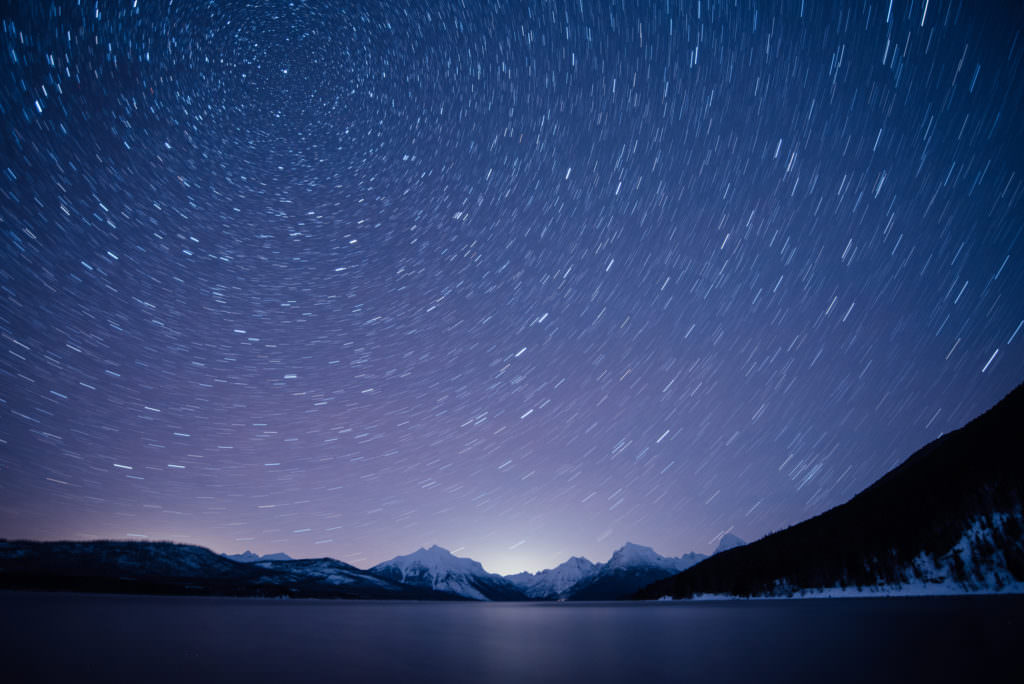Here at Leatherman, we are fortunate to work with talented photographers who are in the field capturing our products used in a variety of settings. Isaac Miller travels the country with his fiancé, Margo, and their dog, Rico, in an Airstream they call home. Living a nomadic lifestyle gives him the opportunity to capture arresting imagery in many landscapes and conditions. Knowing that he’s no stranger to the cold, we asked him to share some of his tips for a successful shoot in cold winter settings. Words and images by Isaac Miller.
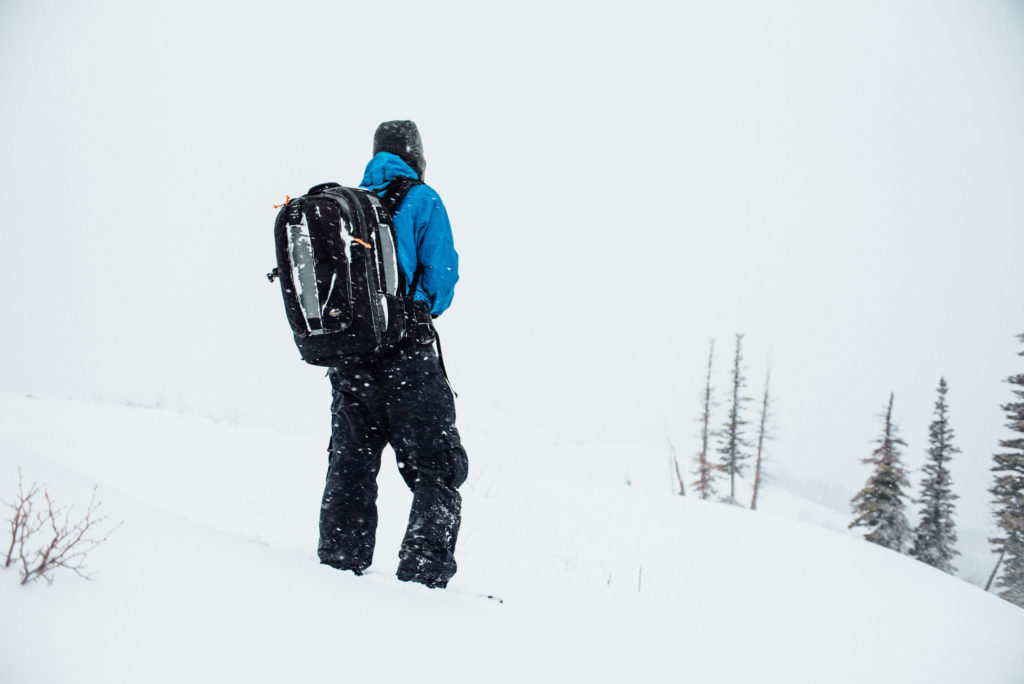
Reentry to the cold of Montana in the middle of winter has been a shock. After spending the better part of two months on projects and holiday visits in warmer, albeit dustier, climates it was time to return home last week to a landscape filled with snow and ice for the duration of winter. Cold climates present unique challenges for both equipment and photographer that often stand in the way of creating compelling imagery. As a professional photographer, I seldom get the luxury of shooting in perfect weather conditions as oftentimes the most engaging scenes occur during inclement conditions. Over the years I have picked up a few techniques that have helped keep me and my equipment functioning when the snow is blowing and the mercury drops below freezing.
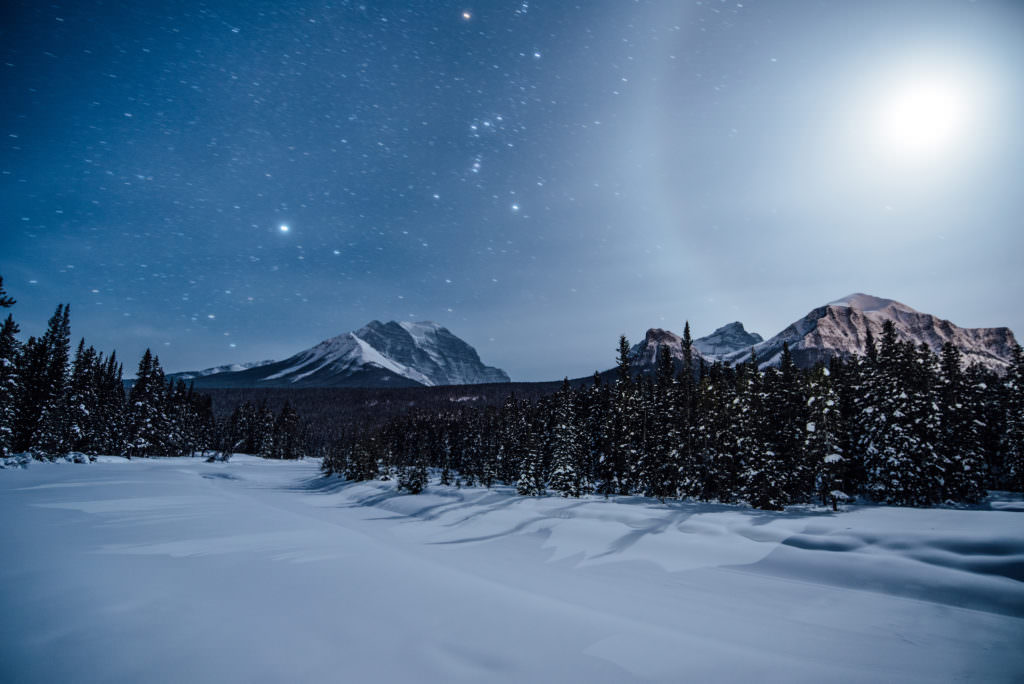
Think about yourself first. It doesn’t matter how nice your camera is and how well stocked your gear bag is, if you are physically uncomfortable your photos are usually going to show it. Photography is a game of preparation and patience and takes time. Warmth from head to toe is essential in making your photographic adventure a successful use of time. I also highly recommend a thin set of gloves that you can operate all camera controls with to avoid any direct contact with metal surfaces on your gear.
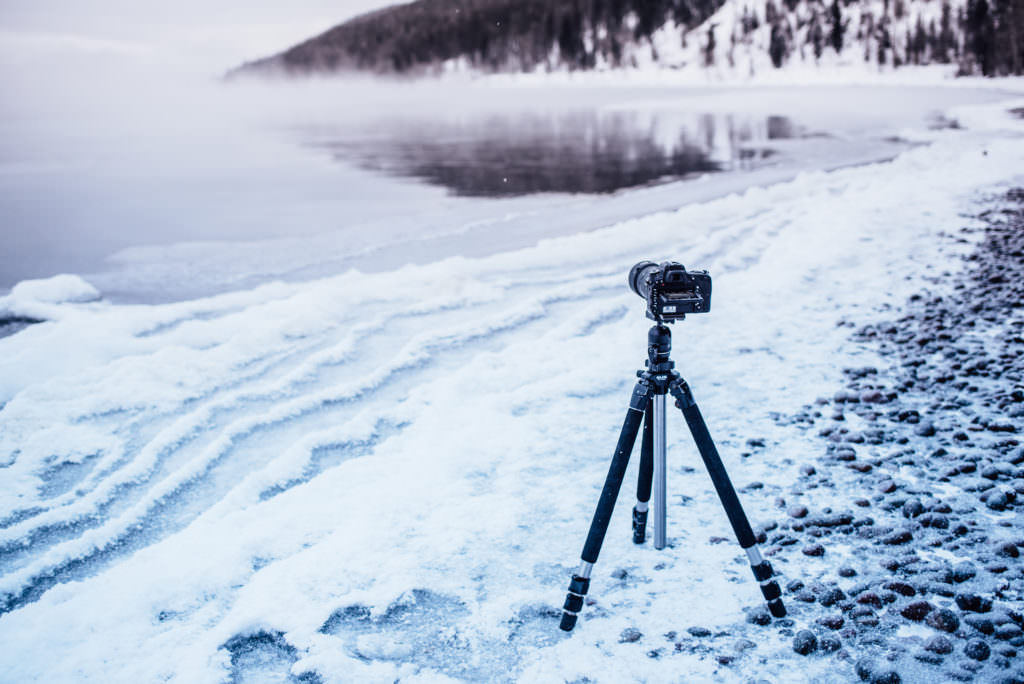
Use UV filters to save your lenses from the elements and any potential spills. Snowflakes caking onto the front of the lens is a constant occurrence if there is any precipitation and having a filter on makes it much easier to clean off while protecting the glass on your lenses.
Remember that zoom lenses are your friend. As much as I enjoy shooting with fixed lens lengths I try to keep lens swaps to a minimum when the weather is nasty as getting snow in your camera body is decidedly unhealthy for the mechanisms and electronics. Zoom lenses are a big help in accomplishing this if you can manage it. If I am in a situation where I need to be swapping lenses frequently I make sure to have a jacket or poncho of some sort to keep the snow away.
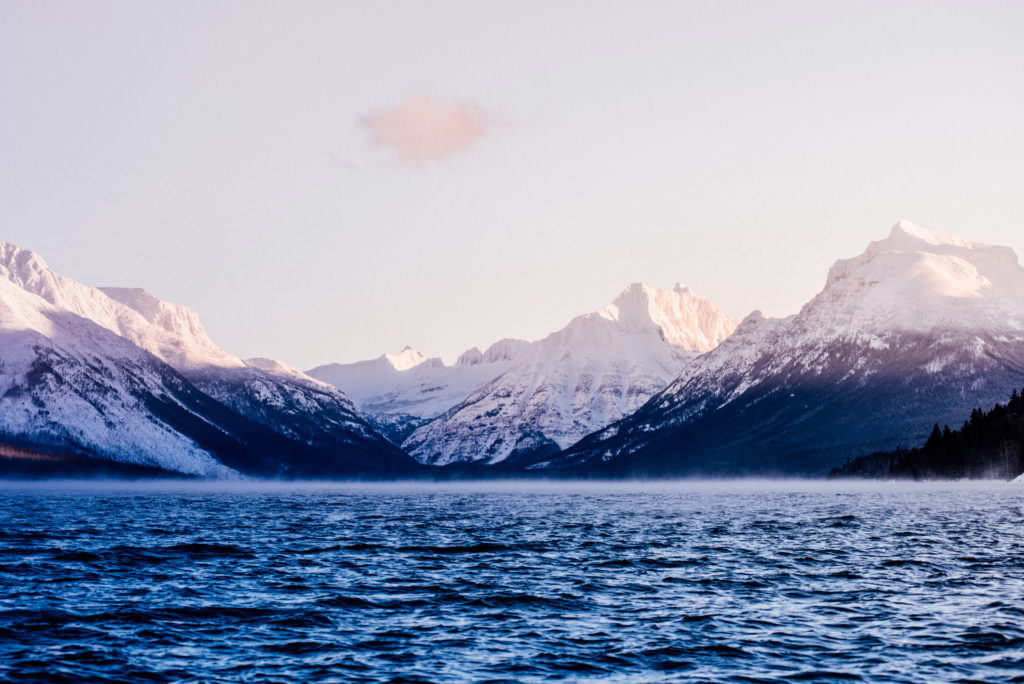
Always carry at least one spare battery. Battery life in cold temperatures gets wildly unpredictable. I always carry at least one spare no matter how long I expect to be shooting. I will shoot with one battery until it gets to about fifty percent and then swap it out to an inside pocket of my jacket or the camera bag with a hand warmer against it to warm back up so it will have juice left later in the day. I find that this strategy can almost double the amount of time my batteries last during cold weather.
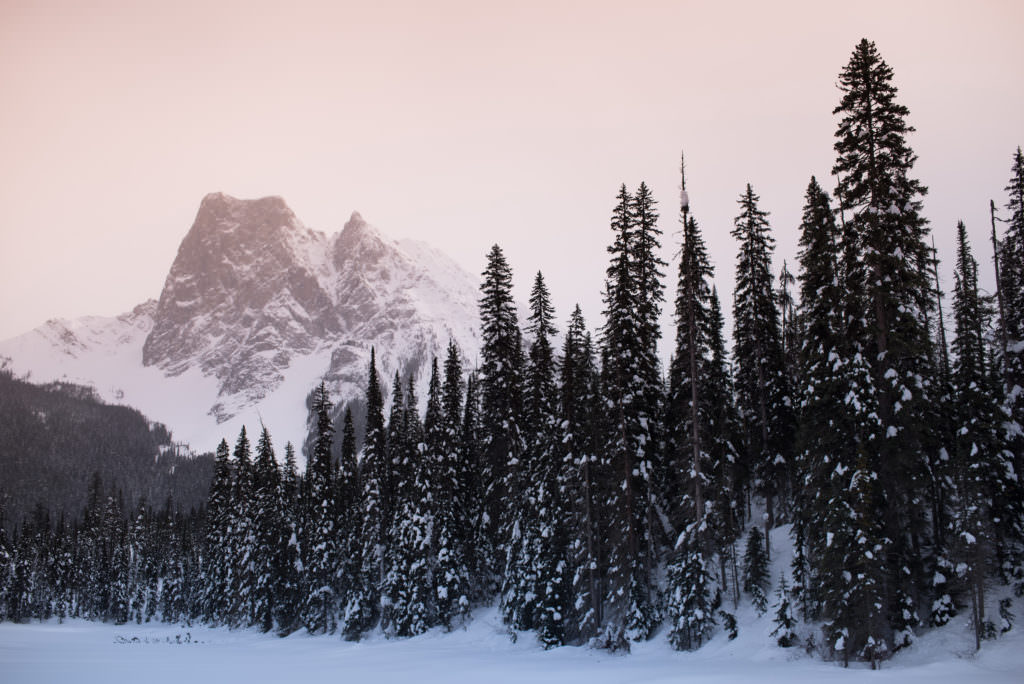
Dealing with condensation on cameras and lenses is a big part of cold weather photography and a constant headache. My strategy that has worked for years is to always place my gear in the camera bags and zip everything closed before returning to a warmer environment such as a house or car. The padding in the cases serves as an insulating layer to let the cameras and lenses warm up slowly and prevents condensation from forming on the cold metal and glass. After a reasonable amount of time it’s perfectly fine to open the cases up to the inside without worrying about the gear sweating.
Carry a blower bulb and a microfiber towel to clean snow off. Getting snow off of equipment is much easier before it melts and turns to water.
Keep breath away from the camera and lenses. Anything you breathe on will effectively become coated in frost.
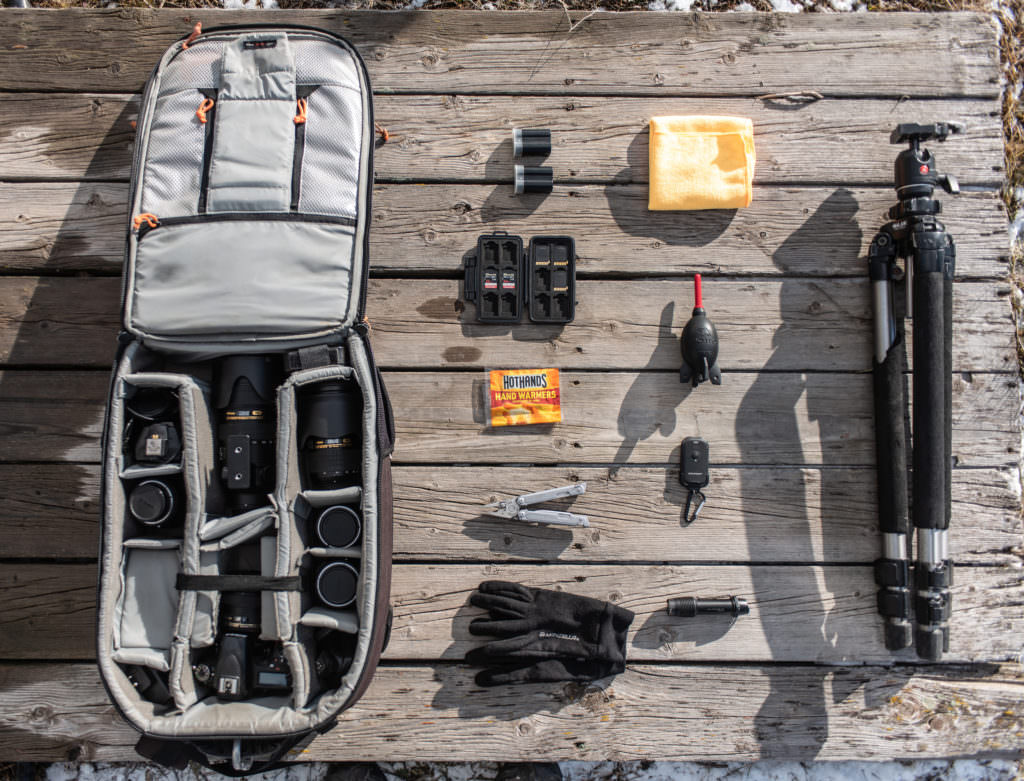
What’s in my bag for winter landscape photography:
– Pro grade camera bodies and lenses from Nikon. The weather sealing on most mid to high level equipment is critical to keeping the elements at bay. I currently use D750 bodies and a full lineup of fast prime and zoom lenses depending on a projects objectives.
– Good camera pack with room for extra layers and personal gear. There are lots of options on the market but I’ve had great success with the LowePro line of AW Trekker packs.
– Multi-tool. The Leatherman Free P2 has become my go-to tool that is always clipped on my pocket. I frequently need a tool to tighten down tripod baseplates in the cold and its one handed operation allows me to keep my gloves on the entire time.
– Solid tripod. Having glove-friendly adjustments and tripod legs with spikes for icy surfaces is key to a good experience. My go-to that has endured years of abuse in harsh conditions is a Slik Pro 700 DX AMT with a Manfrotto 496 ballhead mounted on it.
– Hand Warmers. Throw them in your gloves, boots, or in with your batteries. They may soon become your best friend.
– Durable flashlight or headlamp. I’ve been using the LED Lenser F1R for three years now and it’s unbreakable and turns night to day.
– Giottos Rocket Blaster blower bulb and microfiber towel for cleaning purposes.
– Spare batteries for all cameras and flashes.
– Memory cards. You can’t go wrong with SanDisk ExtremePro cards.
– UV and ND filters by Hoya.
– Remote shutter release for long exposures.
– Lightweight glove liners with grippy surfaces.
– Extra layers for weather changes or when you just can’t bring yourself to leave the scenery behind.
Go out, have fun, and be safe. The winter can be very unforgiving on you and your gear but frequently lends itself to amazing landscapes that many people don’t have the chance to ever see. Whether you make a living with photography, or simply enjoy capturing images for your own viewing, a little bit of preparation can make your next outing that much more rewarding.
Follow Isaac and his travels
